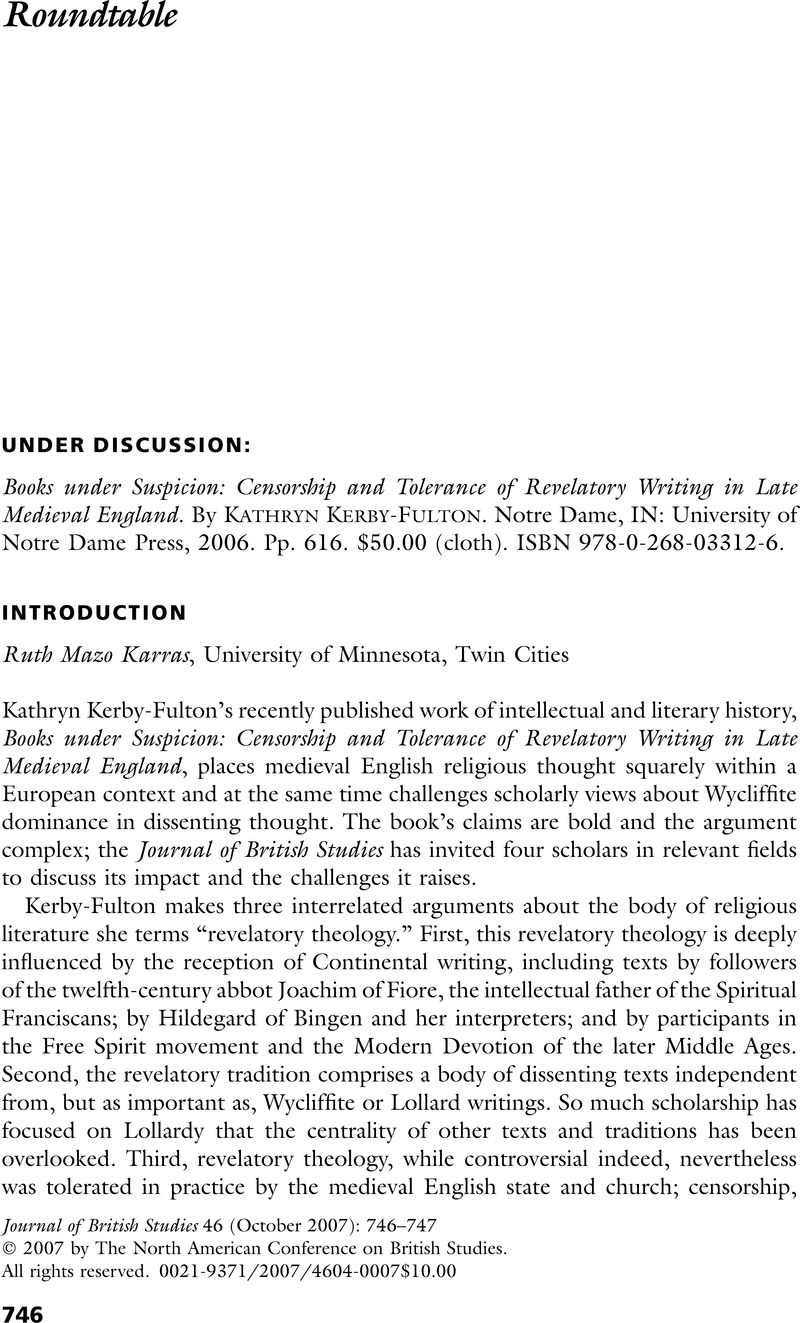No CrossRef data available.
Article contents
Books under Suspicion: Censorship and Tolerance of Revelatory Writing in Late Medieval England. Comment: The Visionary Genre and the Rise of the “Literary”: Books under Suspicion and Early Modern England
Published online by Cambridge University Press: 21 December 2012
Abstract

- Type
- Roundtable: Books under Suspicion: Censorship and Tolerance of Revelatory Writing in Late Medieval England. By Kathryn Kerby-Fulton
- Information
- Copyright
- Copyright © North American Conference of British Studies 2007
References
1 Churchyard, Thomas, Dauy Dycars Dreame (London, 1551Google Scholar; Pollard, A. W. and Redgrave, G. R., A Short-Title Catalogue [STC] of Books Printed in England, Scotland and Ireland and of English Books Printed Abroad, 1475–1640, 2nd ed., rev. W. A. Jackson et al., 3 vols. [London: Bibliographic Society, 1976–91], 5225.5)Google Scholar. In 1560, the printer Owen Rogers gathered Dauy Dycars Dreame and all but one of its subsequent answer poems into a single collection titled The Contention bettwyxte Churchyard and Camell, vpon David Dycars Dreame (London, 1560Google Scholar; STC 5225). For the sake of convenience, all further references to Dauy Dycars Dreame and its numerous answer poems will be to this edition. The date of the controversy is established in Camell's poem “Camelles Conclusion,” which mentions that Edward VI has ruled for nearly six years (Contention, sig. F1r).
2 Langland, William, The Vision of Pierce Plowman (London, 1550Google Scholar; STC 19907), fol. 36r.
3 Thomas Camell, “To Dauid Dicars When,” Contention, sigs. A1v–A2r.
4 Contention, sigs. A2v, B4r. By the end of the controversy, Churchyard found himself forced to offer just such an exculpatory gloss of his most controversial lines; see Contention, sigs. G1r–H1v.
5 Ibid., sigs. C3r–D4r.
6 Ibid., sigs. D2r–D3v.
7 For Churchyard's claim that he cannot be identified with his literary character Davy, see Contention, sigs. A3r, B3v.
8 For a more detailed study of the “Davy Dycar” controversy, see Lucas, Scott, “Diggon Davie and Davy Dicar: Edmund Spenser, Thomas Churchyard, and the Poetics of Public Protest,” Spenser Studies 16 (2002): 151–65Google Scholar.
9 Patterson, Annabel, Censorship and Interpretation (Madison, WI, 1984), 4Google Scholar.




